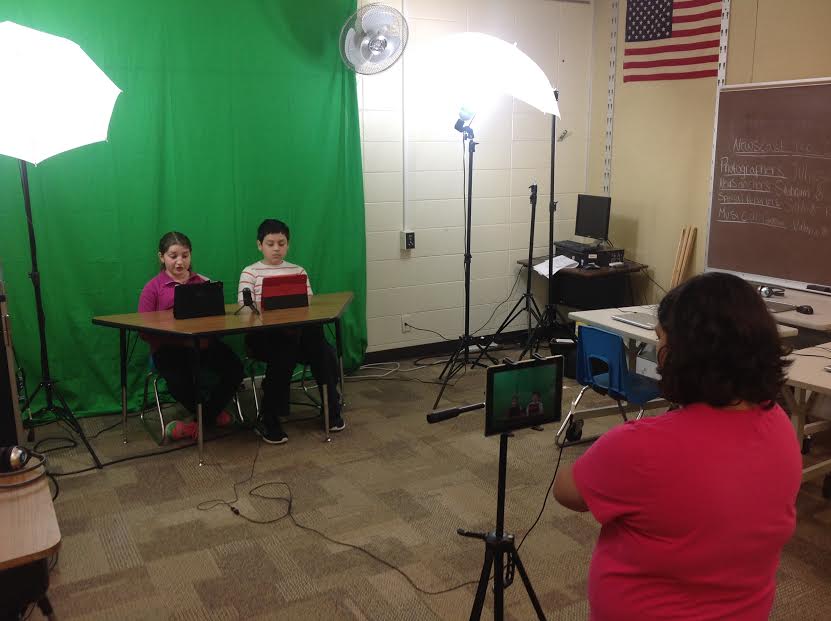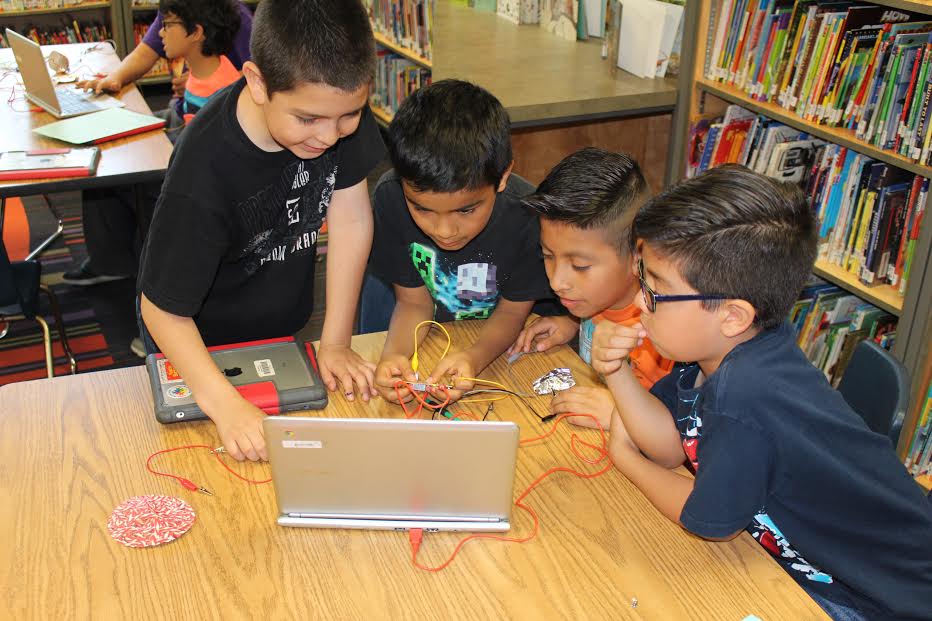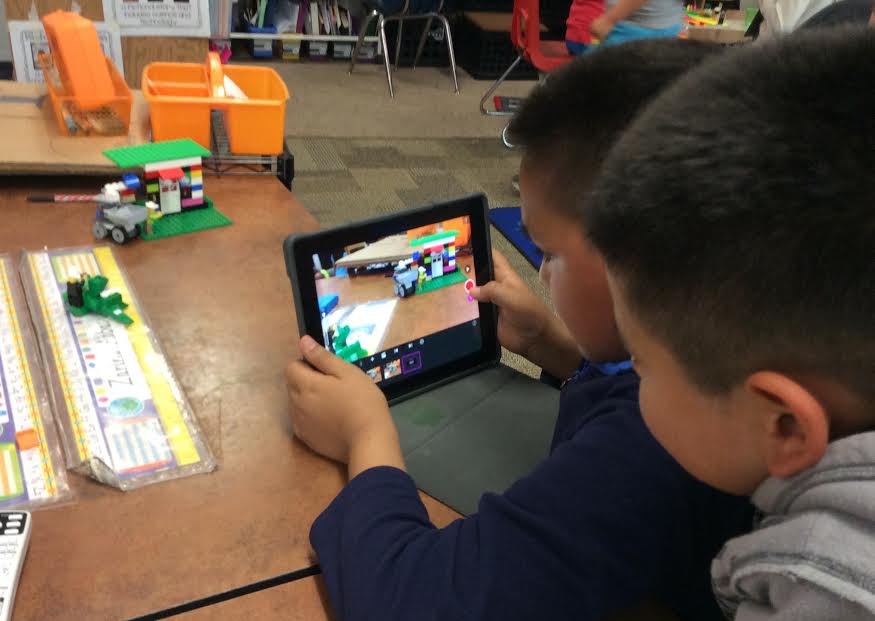You’ve probably heard of the student-led “Genius Bar”, which is generally a team of student leaders that provide technical support for the technology devices and programs in their schools. What a great way to utilize and develop student knowledge and skills, right? I couldn’t agree more.
But what if we took the opportunity to develop young, skilled learners a step further, and asked those student leaders to support, collaborate with, and mentor teachers and their peers with in-class technology projects? What if we asked those student learners to create informative, instructional digital content that is accessible to all? After all, many of us would agree that the students are the ones who are usually the most knowledgeable, up-to-date resources for what is the latest and greatest with technology, so why not tap into their large knowledge base and cultivate their leadership potential?
Our school here in Wisconsin did just that, and the results have been astounding. Here’s how it happened.
The Various Student Tech Team Sub-Committees
“The addition of our student tech team has provided effective student assistance for our younger learners, an opportunity for the team members to serve as role models, and a wonderful support system for our school as we continue to move forward with technology integration.”
-Karla Hanson, first-grade teacher
The student tech team at our elementary school was created five years ago, charged with helping and supporting teachers and students to become familiar with using and creating projects on the iPad.
The initial team, which was comprised of four fifth-grade students, had such a successful inaugural year that the team has now expanded to include twelve students, each on sub-committees supporting different aspects of technology and innovation:
- The “Newcast Directors” lead groups of their peers as they produce video newscast announcements,
- The “iPad Consultants” provide in-class technology project support for younger students, and
- The “Makerspace Mentors” create and support design challenges and innovation projects in the Makerspace.
Next year, the team will further expand to sixteen members, by adding a fourth sub-team, the “Cyber Squad”, who will focus on developing and providing resources related to the many aspects of digital citizenship and online safety to be shared with all grade levels, parents, and our community.

How Students Apply
“Being on the tech team has been like a real job; I learned how to be more responsible, what to do as a leader and how to really work together as a team.”
-Salvador Martinez, 4th grade student tech team member
In creating these teams, we desired to fuse our school’s focus on college, career and community readiness into the student tech team, specifically by designing the application process to reflect that readiness.
Interested students are required to fill out a Google Form application to be considered for a spot on the team. In the application, students are asked to answer questions about the skills and abilities they posses that make them a qualified candidate for the team, as well as what previous experiences they have that will make them successful leaders. They are also asked to provide professional references (mostly in the form of previous or current teachers) that can speak to their skills and abilities.
Once selected, the teams receive initial on-the-job training. While they are supported by teacher leaders as facilitators throughout the year, the students themselves really take the lead with each of their respective teams and are responsible for being present during their specified work time (usually during recess or before school), overseeing the completion of tasks and projects and meeting deadlines on time.
Not Just the Student Leader Usual Suspects
“The tech team… provides a venue for our quietest students to showcase their skills, as well as a stage for our more outgoing students to shine.”
-Hannah Bell, 5th grade teacher
When selecting the students who will serve as members on the tech team, we look beyond the “usual suspects” that are regularly chosen for leadership roles over their classmates. We are careful to consider students that may need just a little nudge to be pushed out of their comfort zone slightly, in order to build their confidence and develop the leadership skills that we know they have inside of them.

One student, for example, was known for her very quiet and shy nature, and she rarely voluntarily participated in class discussions. But as a Newscast Director, she took charge of the camera, directed her peers as they wrote, rehearsed and recorded their scripts, and often sat in as fill-in anchor, where she was recorded reading aloud a script that she had not previously practiced. Her confidence grew immensely throughout the year on the tech team, which also transferred to her increased successes in the classroom.
Developing the 4 C’s
“The best part of being on the tech team is working with people that I really didn’t know before we became leaders on the team. It has been fun working with other kids in the school, learning more about them, and helping younger kids be creative.”
-Ashley Witt, 5th grade tech team member
One of the most impressive aspects of the student tech team is how it organically generates opportunities for the students to develop their 4 C’s—communication, collaboration, critical thinking and creativity skills. The iPad Consultants, for example, get a quick, 2-minute briefing about the project in which they will be supporting their younger peers, right before visiting the classroom to get started. Without any specific training or prior practice, these student leaders are challenged to jump in and help the younger students complete projects, quickly problem-solving any issues that arise along the way.

Additionally, as a dual-language school, our tech team leaders are prepared to communicate and create with students in both English and Spanish, even if they are not native speakers of that language. Our Makerspace Mentors, for example, produce instructional videos and creative, digital content in both languages so that all students can access the design challenges in the Makerspace.
A Worthwhile Initiative
“I watched [the students] grow as leaders from "I'll do it for you" to “Let me teach you how to do it," which is every teacher’s ultimate goal—for the students to become the teachers.”
-Neisa Hernandez, 4th grade teacher
Our student tech team has truly been a story of great success, and it’s just the beginning of the story for the leaders that have been a part of the team thus far. The impact that the team has had on our students, our staff, our school, and on the student leaders themselves is immeasurable, and I am certain we will be seeing great things from our student tech team alumni in the years to come.
If your school already has or is considering implementing a student-led “Genius Bar”, I applaud and commend your effort and commitment to providing this level of support and opportunity for your students. I urge you, though, to think beyond the “Genius Bar” and consider the potential for developing those student leaders even further by including opportunities for them to create, collaborate, mentor and support their teachers and peers in the classroom and beyond.


